| Non-native Species |
| Year-round Resident |
Purple Finch
Haemorhous purpureus
| Early Spring Date: | March 16 |
| Late Spring Date: | May 8 |
| Best Dates to See in Spring: | April 11-27 |
Spring: Some Purple Finches winter in the Washington metro area, but they are uncommon at Monticello Park. They breed in Canada, the northern United States, and the Appalachian Mountains. A small flurry of them sometimes passes through Monticello around the third and fourth weeks in April. The House Finch is a non-native, year-round resident from the western United States. Both Purple and House Finches visit local bird feeders.
Fall: House Finches can be seen throughout the fall. In most years, Purple Finches are not seen at Monticello during the fall. However, in 2020, there were numerous fall sightings.
Where to See Them in the Park
Purple Finches generally stay high in the trees, but they sometimes will forage lower. House Finches can be seen anywhere from the ground to the tops of trees. They frequently go into the stream to bathe and drink.
Physical Descriptions

House Finches and Purple Finches look similar. The male House Finch looks like a sparrow with splashes of red on the head, throat, breast, and neck. The red is brightest on the forehead.
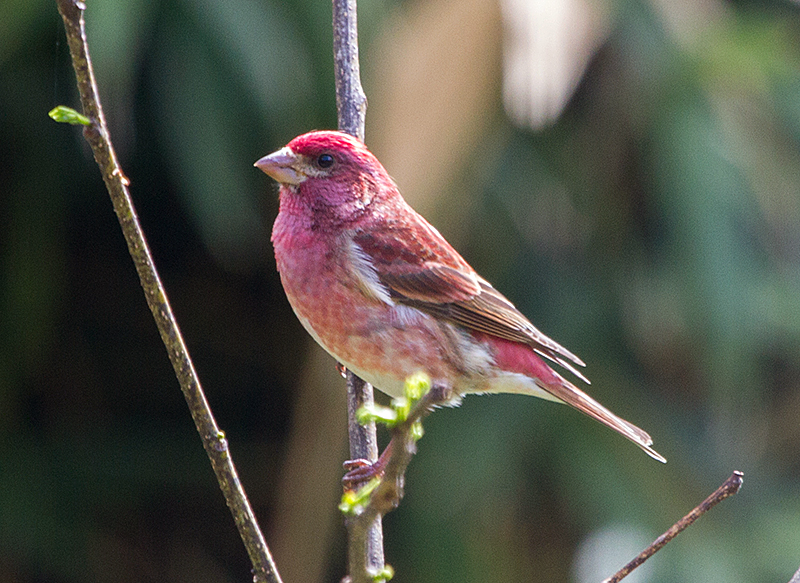
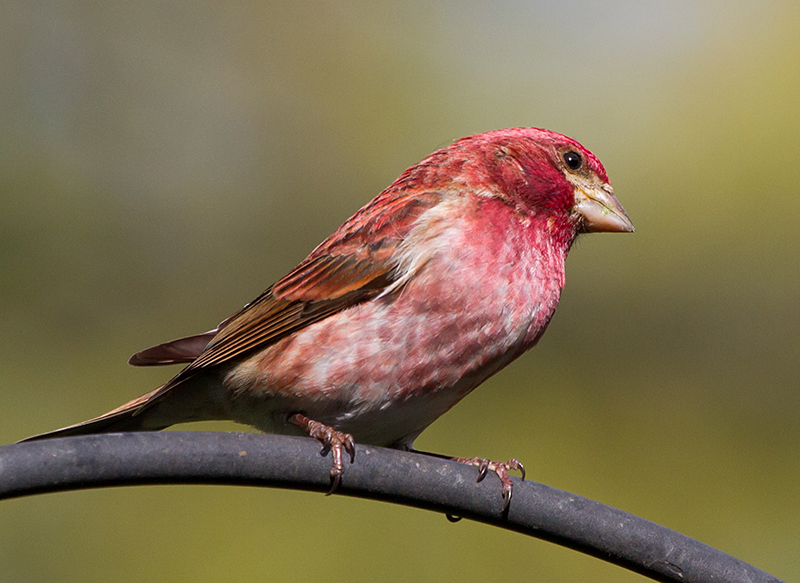
Male Purple Finches have more red on their head and back and much less streaking. The red feathering is the color of raspberries and is a different shade than the red on a House Finch.
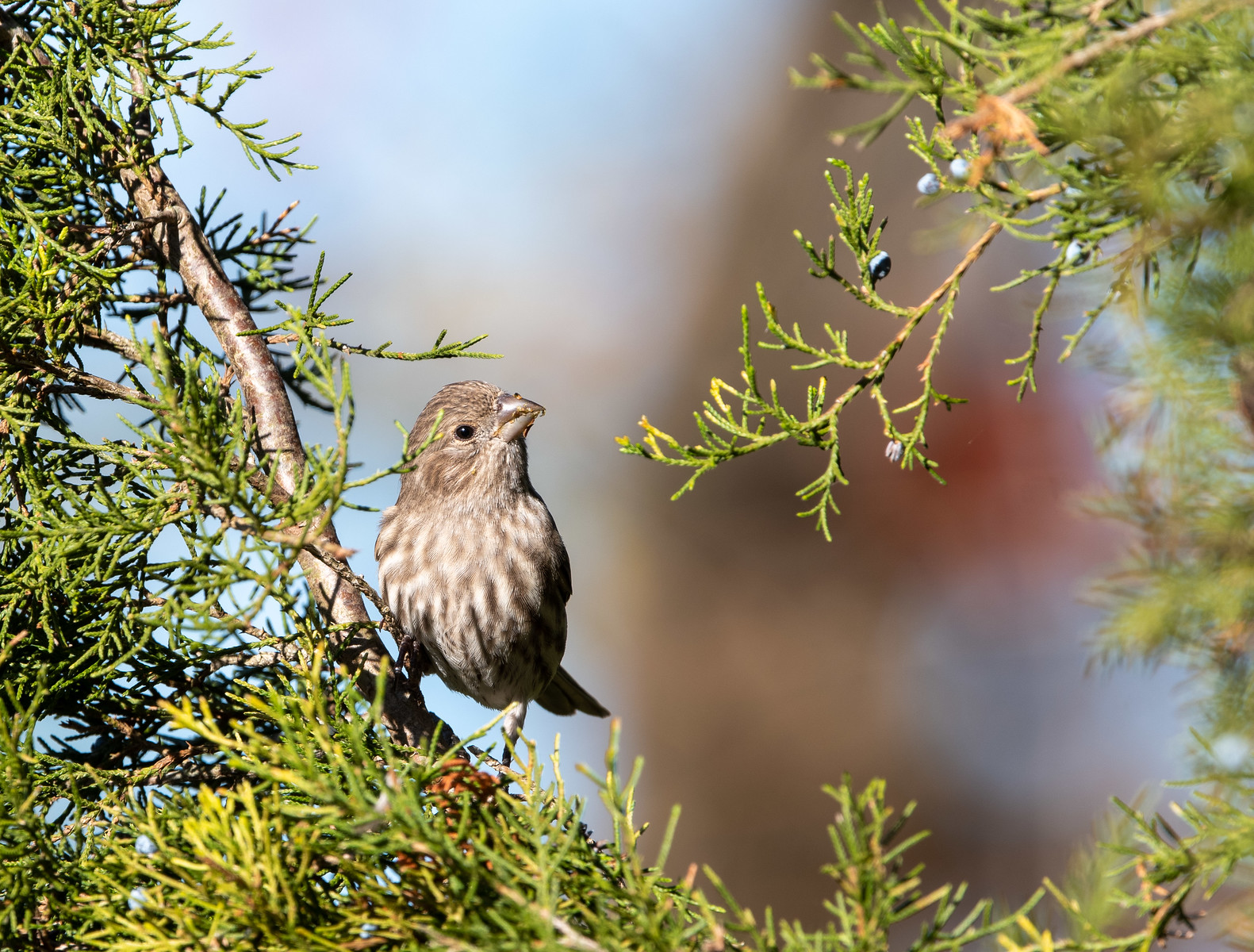
The female House Finch looks like a very streaky sparrow with a slightly larger bill. Her upper mandible looks rounded. A key to identifying her is that she has no key fieldmarks that stand out.

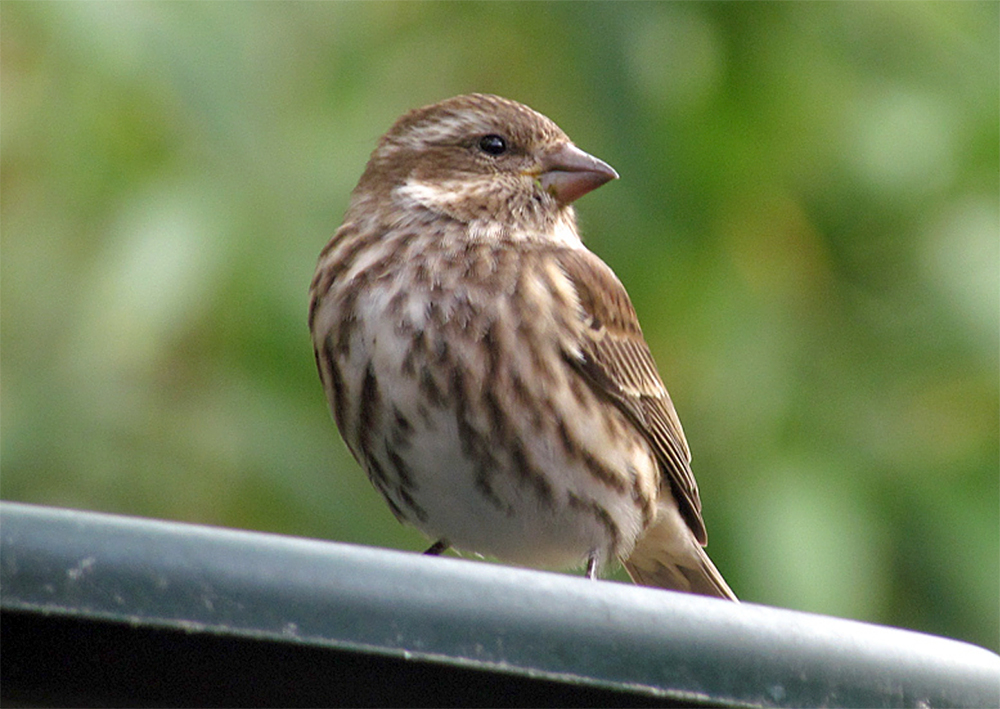
Female Purple Finches look like a smaller version of a female Rose-breasted Grosbeak, with a much smaller bill. She is a streaky brown bird with a prominent face pattern. She has a white line over the eye and a lower white line that forms a border around her dark cheek. Her upper mandible is not as curved as on a House Finch.
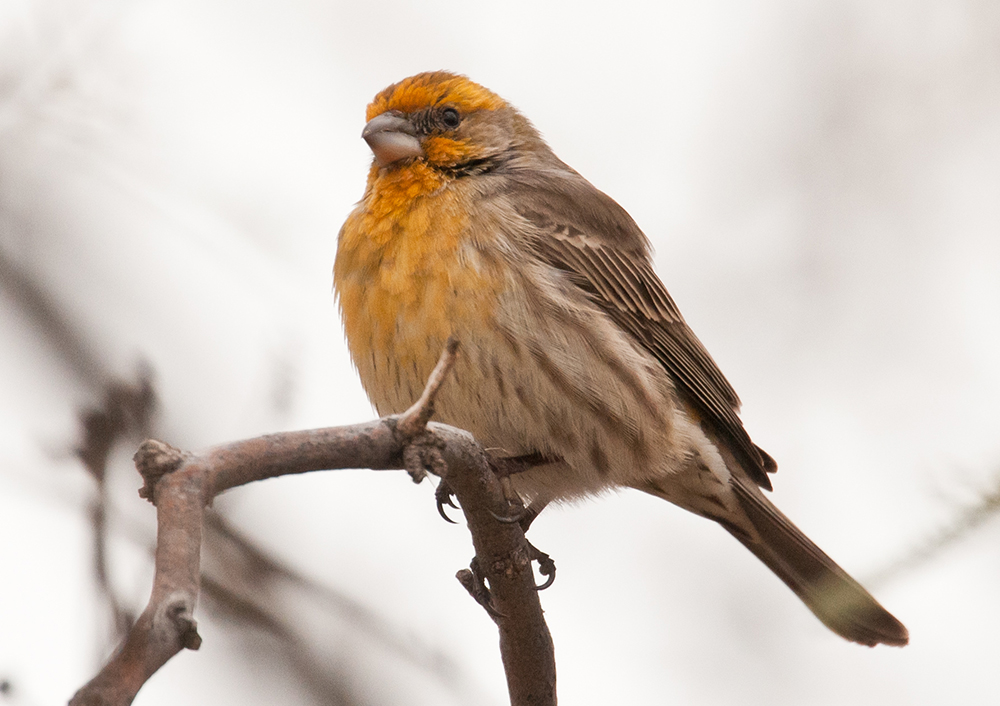
Sometimes, House Finches can have yellowish rather than red feathers, a condition know as xanthochroism. This condition also can also affect Rose-breasted Grosbeaks, Scarlet Tanagers, and other species with red plumage.
Vocalizations
Both the House Finch and Purple Finch sing long and lively songs. The House Finch's song includes harsh, burry notes, and it often ends on these notes. The song of the Purple Finch is sweeter and does not contain harsh notes. Both species sing a lot. You can hear House Finches singing in downtown Washington and in many other areas where there are a lot of people. Purple Finches are usually birds of the woods.
Hear the song of the Purple Finch.
Hear the song of the House Finch.
Notes
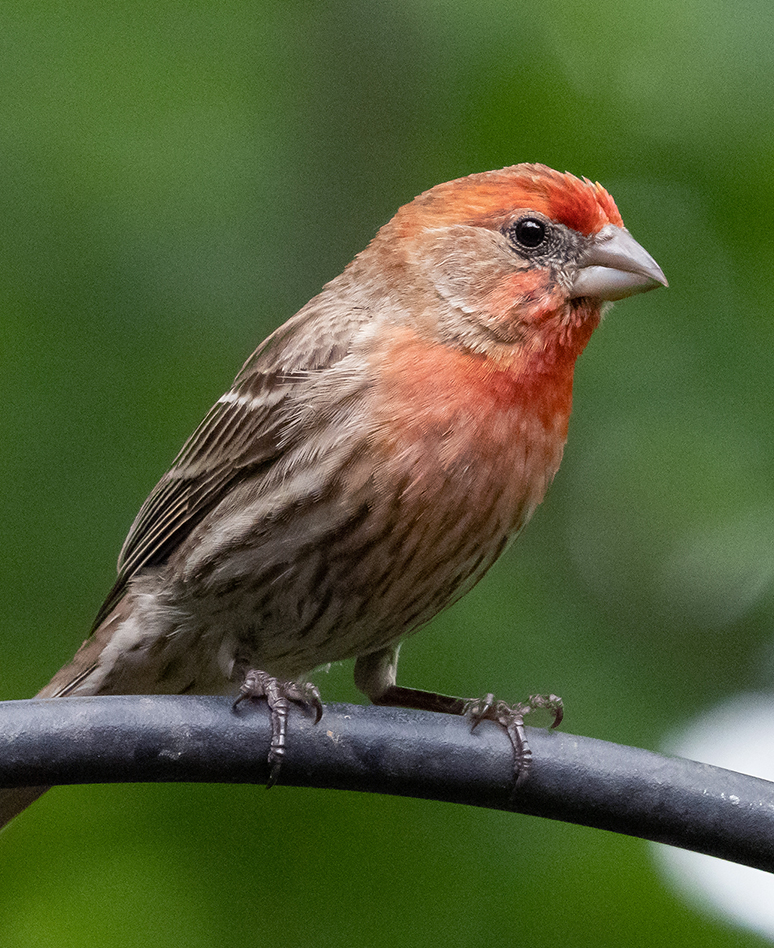
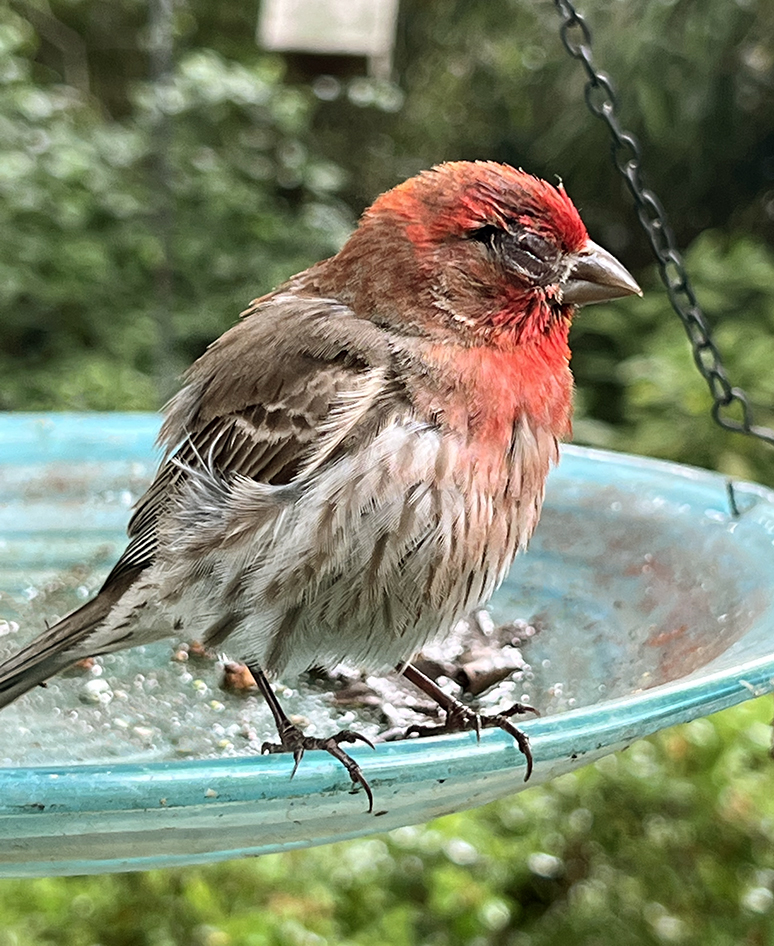
House Finches are now one of the most widespread species in North America, with some estimates of their population exceeding a billion individuals. They are native to the western United States. They are a seed-eating species who sings a lot, and they became popular as cage birds during the early part of the 1900s. People illegally trapped them and shipped them to the eastern United States, where they were sold in pet shops and department stores. An activist named Richard Pough saw these birds being sold in New York and knew what they were, so he began to report the sellers to the authorities. When word spread about possible prosecution, many sellers opened the cage doors and let the evidence fly away. The released birds greatly expanded their eastern range in the ensuing decades. A range map for the species shows a barren strip down the center of the US, with the native population to the west and the non-native population to the east.
During the mid-1990s, many people began to notice that some House Finches coming to their feeders had something wrong with their eyes. The condition started in the eastern population of House Finches, but it now has also spread to the House Finch population in the western half of the United States. The birds are afflicted with Mycoplasmal Conjunctivitis, a bacterial disease known to infect poultry. While House Finches are the primary victims, the disease also affects Purple Finches, American Goldfinches, and Evening Grosbeaks. People who see birds at their feeders with Mycoplasmal Conjunctivitis should take down the feeders for a few days and clean them thoroughly, either by running through a dishwasher on the hot cycle, or washing them with soap and boiling water, a diluted bleach solution, or a 10% vinegar solution.
Origin of Names
Common Names: Purple from their plumage. House because they are commonly found near houses. Finch from the German fink, which sounds like the call of a finch.
Genus Name: Haemorhous means blood rump.
Species Names: Purpureus is Latin for crimson — the ancient Romans did not have a word for purple. Mexicanus means of Mexico, even though Mexico is only a small part of the House Finch's range.
Purple Finch video footage
House Finch video footage
Return to the Index
